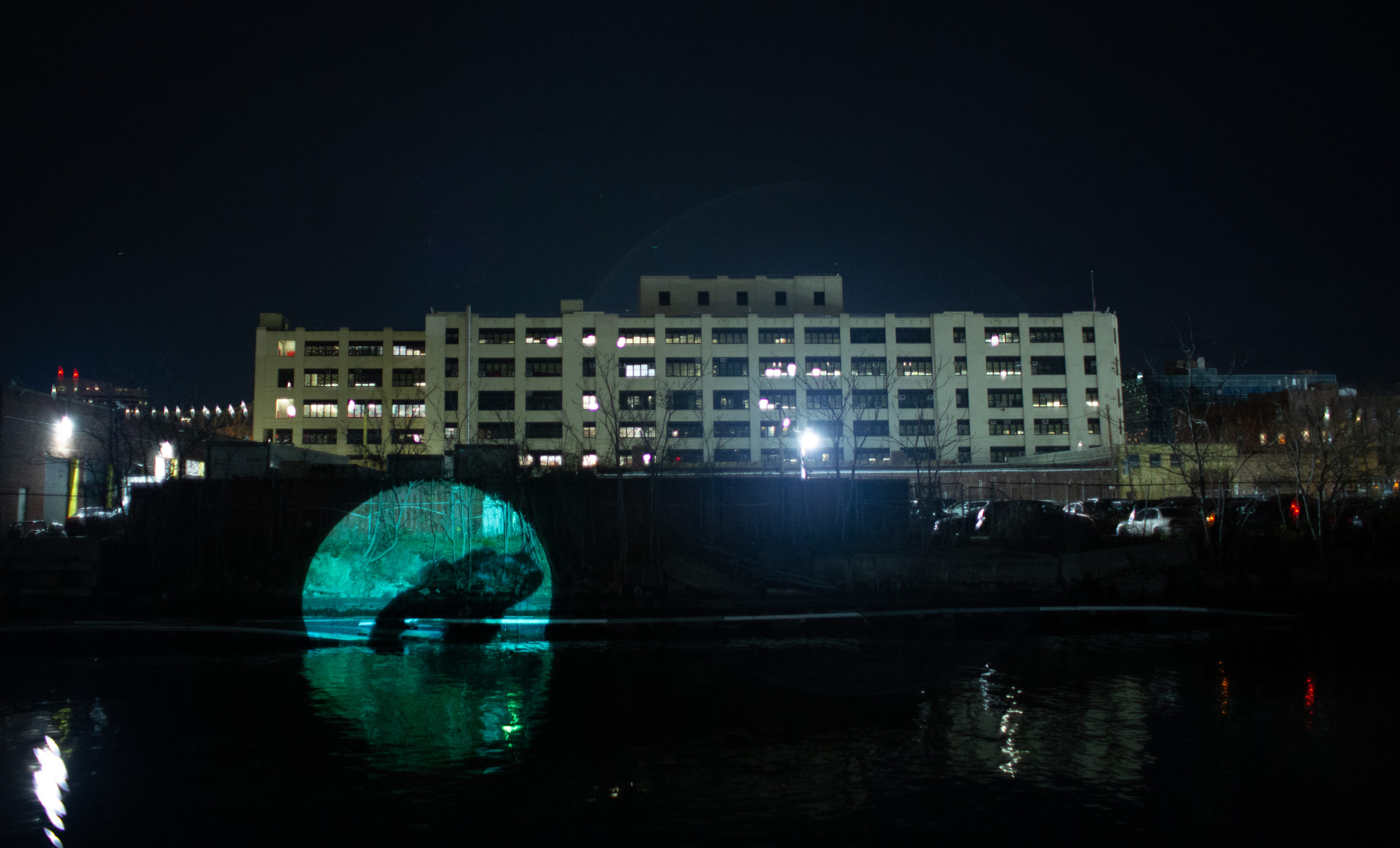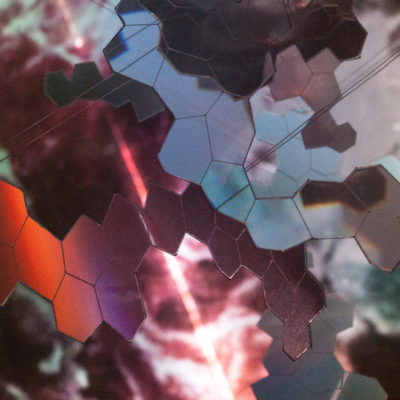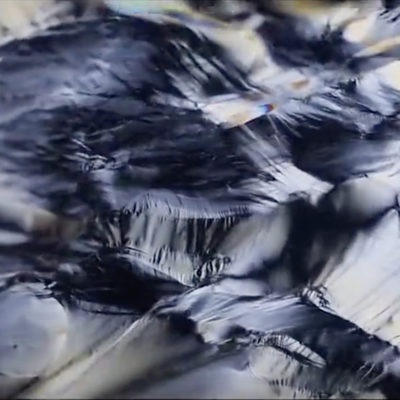Site-Specific Outdoor Projection Installation, Anable Basin, 2020
Greetings from the Canal uses a high-powered projector and video mapping to bring the derelict-looking waterway by Plaxall Gallery to life, with projected images of mud crabs rising out of the water to bring the viewer brief facts about their environment. Videos of fish and eels appear in watery portholes, and the audience is invited to venture outside to experience the water. Light in this piece is used to reveal the surroundings in a very literal fashion.
New York City isn’t exactly famous for its wildlife. Sure, we have the occasional celebrity bird – the Mandarin Duck of yesteryear and the Rockefeller Christmas Tree Owl of 2020, but they seem to be limited to Manhattan, and are often noted for the unlikeliness of their being in the city in the first place. The animals that have remained in the city are the ones who have best adapted to building their lives around our trash – rats, pigeons, sparrows, the milkshake-drinking squirrels of the city parks and so forth. When we do elevate these creatures, it’s often with a sense of irony – we praise Pizza Rat for his tenacity, but we maintain that he is still a dirty creature.
Is it common knowledge yet that pigeons are actually doves? Columba livia is a Latin name no one expects you to remember, but they’re also known as “Rock Doves”, and are suited to living on the ledges of tall buildings because they originated from rocky canyons. They’re clean, quiet, and monogamous – honestly the perfect neighbors, in many respects.
Perhaps a harder sell for natural beauty is the East River. The flora and fauna of the waterways here are quite literally swimming in filth: untreated sewage, garbage, industrial pollution so bad that the canals of Brooklyn have had the oxygen tar-choked out of the water. The Gowanus Canal in South Brooklyn is set to finally begin a dredging process, but it’s a massive undertaking. A recent canoe trip there greeted this artist with the smell of gasoline, wrapper-laden water, and toxic rainbow sheens that only Lisa Frank might enjoy.
The animals of NYC are disparaged as being dirty, but it’s only because we have created the filthy environment in which they reside. Emily Andersen wanted to take a look at the history of Anable Basin: why it exists, what was there before, and what lives here still in this odd, unlikely abandoned boat parking lot.
Emily Allyn Andersen, 2020

Site-specific Outdoor projection installation, Anable Basin, behind The Plaxall Gallery during the exhibition EDGE OF LIGHT, 2020
Emily Allyn Andersen was knocked out of a ten-person canoe into the East River by a speeding trash barge in 2016, and has wondered what lurks in those depths ever since. She is a member of The Illuminator Collective, an NYC-based art-activist collective that uses large-scale, site-specific guerrilla projections to bring messages to the streets. She enjoys brevity, levity, and creativity. She doesn’t love name-dropping, but she has worked on projects with Nan Goldin, Laura Poitras, and the Guerrilla Girls, and recently consulted on a project for Hank Willis Thomas. As a member of the collective, she has been an Artist In Residence at the Hemispheric Institute for Performance and Politics, and has had work shown at Colgate University (“Wall, Street” solo show, 2017); the Center for Digital Culture in Mexico City (“Border Blaster” installation, 2019), and the Brooklyn Museum (Installation, “Agitprop!” Group Show, 2016). She’s brought interactive projection performances to PASEO Art Festival in Taos, NM; O+ Festival in Kingston, NY; and Dupont Underground in Washington, DC. Her work with The Illuminator has been noted in The New Yorker, The New York Times, PBS, and Hyperallergic, among others.

 EDGE OF LIGHT
EDGE OF LIGHT Virtual Opening & Viewing
Virtual Opening & Viewing